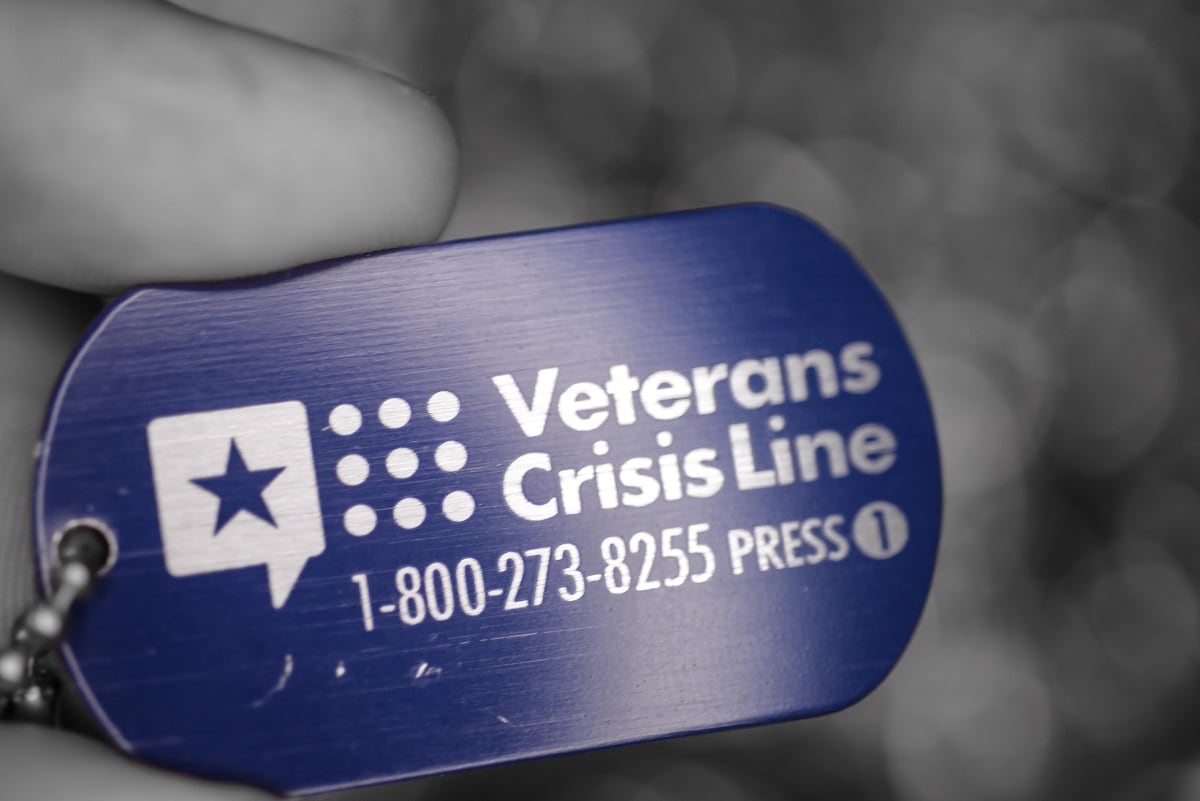As the leaders of the Veterans Health Administration and the President’s Roadmap to Empower Veterans and End a National Tragedy of Suicide (PREVENTS) Task Force, we fear the oft-repeated, “one suicide is too many” will one day lose its impact.
Suicide is a national problem that disproportionately affects veterans. President Donald Trump authorized the PREVENTS task force to address the Department of Veterans Affairs’s top clinical priority, suicide prevention, and to provide a template for the nation to do the same.
Last month, VA released its 2019 National Veteran Suicide Prevention Annual Report, which includes data from 2005 through 2017. This report showed that among U.S. adults, the average number of suicides per day rose 43.6 percent, from 86.6 in 2005 to 124.4 in 2017. These numbers included 15.9 veteran suicides per day in 2005 and 16.8 in 2017, an increase of 6.1 percent. After adjusting for population differences in age and sex, the suicide rate for veterans was 1.5 times the rate for non-veteran adults.
While the smaller increase of suicide among the veteran population is reason to believe VA’s suicide prevention programs are beginning to have an impact, we must do more. Each life lost to suicide is a failure to support someone in need, and the comparatively higher rate for veterans means we must expand our efforts further.
Year over year, VA dedicates increasingly more resources to suicide prevention. Despite this, suicide numbers are not decreasing. This is heartbreaking to the military and veteran community, including those of us who provide care for veterans day in and day out. While VA employees are hard-working and dedicated to veterans’ care, we need more than increased budgets and more mental health professionals. We need community partners and community support to instill a sense of belonging and hope that help is available and healing is possible so veterans can live their fullest lives.
We cannot be more emphatic — VA cannot prevent suicide alone. The recently released data is a call to action for us to work with community partners to help connect veterans, so they can find belonging in a community and avoid isolation — one of the common causes of hopelessness and despair. VA’s public health approach to suicide prevention includes interventions for entire populations, high-risk groups, and people from all walks of life. The reasons why people die by suicide are complex and varied, but the research is clear — connections provided by communities in neighborhoods, schools, or places of worship are critical protective factors in preventing suicide.
RELATED

Here in Washington, the president mandated PREVENTS by an executive order signed in March 2019. The order established a Cabinet-level task force to develop a national roadmap for suicide prevention. The PREVENTS effort will engage federal, state, and local governments, along with non-governmental organizations and the veteran community to create a broad-based national public health effort to prevent veteran suicide. Preventing suicide and alleviating emotional pain and suffering requires an all-hands on deck comprehensive approach. We must all work together.
Meanwhile, in VA health facilities around the country, VA clinicians, peer specialists, and many others provide mental health screening for all veterans who seek primary care from us — no exceptions — and provide critical treatment. On any given day, the Veterans Crisis Line also supports veterans who pose a risk to themselves. The call center responds to an average of nearly 1,800 calls and facilitates care for up to 400 veterans each day.
With the clinical resources VA provides, the attention to suicide prevention by the highest levels of federal government, community partnerships that can help build veterans’ sense of purpose and connection, and advancing clinical treatment across a spectrum of mental health services, we believe we can prevent suicide, one veteran at a time. By taking on this challenge, we will increase the likelihood that all who are struggling or suffering in communities across the nation will be able to seek and receive the help they need and deserve.
Join us in the fight against suicide and our efforts to remove the barriers that prevent help-seeking behavior. Together, we will make a difference.
Dr. Richard Stone is executive in charge of VA’s Veterans Health Administration and Dr. Barbara Van Dahlen is executive director of the PREVENTS Task Force.
Veterans and Service members, including National Guard and Reserve, who need immediate help should call 1-800-273-8255 and press 1, or text 838255.
Editor’s note: This is an Op-Ed and as such, the opinions expressed are those of the author. If you would like to respond, or have an editorial of your own you would like to submit, please contact Military Times managing editor Howard Altman, haltman@militarytimes.com.




